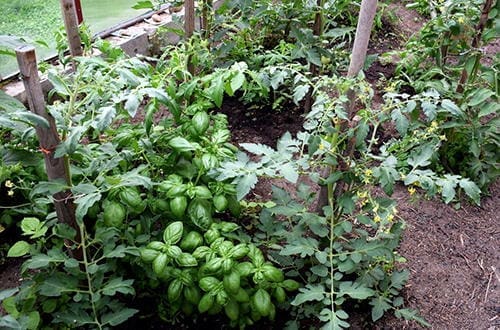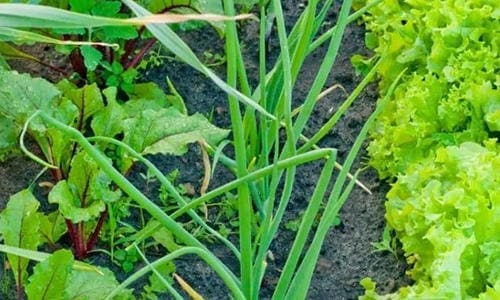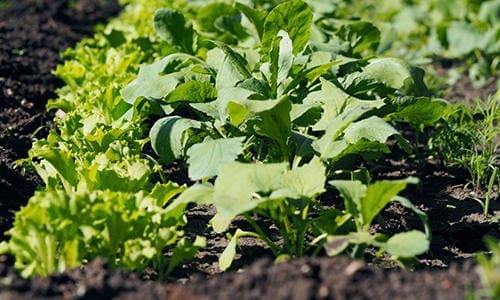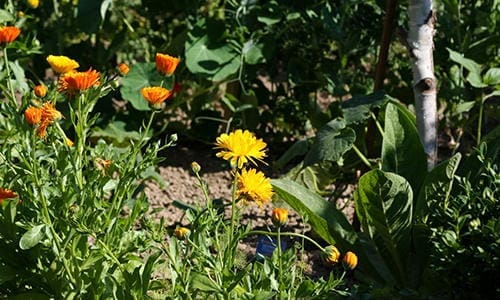The prettiest gardens are the one that are most diverse. Usually a riot of colors with little gems hidden between the foliage – be it a culinary spice or some cherry tomatoes.
While aesthetic plays a role in creating this display, there are other reasons different species are planted together. The combinations of plants are usually planned and calculated – usually called intercropping in farming terms.
The Concept of Companion Plants
By planting different species of plants together, we create an ecosystem where they develop a relationship where they assist one another.
There are different ways in which plants assist one another, and understanding these relationships can create a unique insight to gardening.
Pollination
Certain plants have bright and attractive flowers that are attractive to pollinators. Having such flowers alongside fruit bearing plants, you increase the percentage of pollination and are likely to have a bigger harvest!
Pest Control
Certain plants help with pest control – even though they may have different strategies! In some cases, the plants act as repellents to certain pests, and can be used as boundaries or hedges to protect the crop that is susceptible to pest damage.
In other cases, plants attract pests such that they divert their attention from the crop! With the right layout, both qualities may be used to the advantage of your garden!
Another unique method for pest control, is to have plants that attract predators like wasps or ladybugs. They feed on pests that may damage your plant, thus creating a safer environment for your garden. By combining strengths of plants and insects, a stable ecosystem is formed where each plant may thrive, and abundant harvest is possible.

Nutrition
Through their root systems, each plant has a distinct relationship with the soil.
The root system helps plants absorb water, minerals and nutrients, and they also release compounds back into the soil as an exchange. Compounds released by one plant may be beneficial for another that requires a higher intake of certain nutrients – by planning these combinations, one can improve the health of the garden simply by tapping into the individual ability of plants to release and absorb nutrition.
Soil Health
Crop damage is not only caused by pests above the surface, but also by organisms below the surface such as nematodes.
The ecosystem that lies below the ground far more complex and diverse than what is visible to us – healthy soil is one that has a diverse variety of microorganisms that work in tandem. Protecting the roots of the plants from damage and protecting roots and tubers from damage is an important aspect to be considered. Plant combinations can contribute to this aspect as well.
Related: Boost Your Soil Quality With This Compost

Shade Conditions
Some plants thrive in bright sunshine, while other need rainforest like conditions. Some plants need to have the right mix of sunshine and shade.
Companion plants can help you achieve this, by having taller plants along side shorter ones. The taller plants will get abundant sunshine, while the shorter ones will be in the shade.
Physical Attributes
The physical features of one plant may be useful to another. Tall plants with sturdy stalks are sturdy support to climbers and creepers. By planting them together, you do not need to worry about creating trellises or support for your climbers.
Eliminating Weeds
Plants that spread across the ground cover the topsoil, making it difficult for unwanted plants or weeds to grow in the area. This in turn ensures that nutrition is not diverted and is available for the other plants that you have in your garden.
With different types of relationships between plants, you can look for companion plants that may help each other in more than one way, to get the most out of your garden.

Companion Plant Pairs for Your Garden
Tomatoes & Basil
This classic salad combination is also a classic combination for your garden!
By alternating these plants in your garden, you have several benefits – basil attracts pollinators like bees, giving you a better crop of tomatoes. Basil also repels pests such as moths that lay eggs in the tomatoes, and then attack the fruits.
Furthermore, by planting them together, it is just physically easier to harvest what you need for a salad!
Related: How To Get Rid Of Tomato Hornworms Before They Destroy Your Tomato Plants

Garlic & Beets
Planting alliums (onion, garlic, leeks, etc.,) along with beets is a popular combination to get a better crop of beets.
They are known to repel bugs that can destroy your crop. Additionally, garlic releases sulfur into the soil which is beneficial for a crop of beets.
Garlic is also known to improve the flavor of beets.

Lettuce & Radish
Lettuce has shallow roots and absorbs nutrition from the surface soil, while radish taps deeper into the soil.
Radish acts as a trap for flea beetles, while lettuce ensures that there is adequate ground cover, preventing the growth of weeds.

Corn & Beans
It is amusing how popular culinary combinations also work well in the garden. Often combined in Mexican cuisine, corn and beans are also grown together.
The sturdy stalk of corn provide support to the beanstalk.
Additionally, beans are excellent nitrogen fixers, making the soil more nutritious for corn.
Related: How to Dry Can Beans and Rice for 20+ Years Shelf Life

Zucchini & Calendula
Calendula (like Marigold) is an excellent plant to have in most gardens and can help several other plants. They attract pollinators, including parasite wasps, who not only pollinate, but also are predators for other bugs and insects that may destroy your crop.
Zucchini are tricky plants to pollinate, with a very short pollination window available, as the flowers are open for only a part of the day.
Plants that attract pollinators increase the chance of pollination of zucchini.

Lavender & Squash
Lavender is an excellent plant to have in your garden – it attracts pollinators and adds a gentle aroma every time the flowers sway in the breeze.
Squash or pumpkins need a lot of pollinators to bear fruit, and this combination is known to be successful. Squash is a great ground cover plant that prevents the growth of weeds, and protects the topsoil from damage.
You may also like:
 The Best Fruit Trees to Grow in Five Gallon Buckets
The Best Fruit Trees to Grow in Five Gallon Buckets
Similar to Morphine: The Best Natural Painkiller that Grows in Your Backyard (Video)
10 Tomato Growing Tips For Beginners








